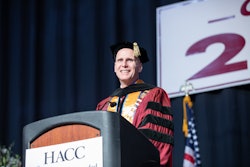Promise programs, or free college programs, are increasingly popular solutions to college affordability issues. Typically, these programs offer college scholarships to recent high school graduates to cover up to 100 percent of tuition and fees at postsecondary institutions in close proximity to the promise community. According to the College Promise Campaign, there are currently over 200 promise programs in 41 states, with many communities and states considering their own program. Promise programs have also caught the attention of politicians as they are popular with middle-class voters who are concerned about the rising costs of postsecondary education and the increasing student debt burden of young adults.
As more communities and states discuss creating a promise program for their students, not enough attention has focused on the variation in design and how these design decisions impact student outcomes. These decisions directly affect which students are eligible for the scholarship and which postsecondary institutions can receive the scholarship.
Typically, these decisions are made due to budget constraints, local community context, or preferences of stakeholders on which type of student should benefit from the promise scholarship. In this post, I discuss the variation in promise program designs and what we know (so far) about their impact on college outcomes. I also offer design recommendations to communities who want to create a promise program for their residents.









